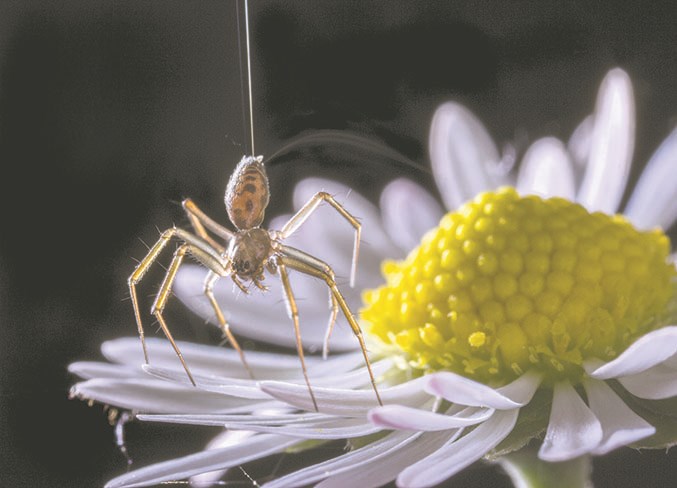Spider talk
Naturalists who want to know more about that giant spider in their window can take in a free talk this week on Alberta arachnids.University of Alberta biologist Heather Proctor will speak before the Edmonton Nature Club’s bug study group about the diversity and biology of Alberta’s spiders this Feb. 7.
Alberta has at least 656 species of spider, several hundred of which can be found around Edmonton, Proctor said. Most of the ones in your home are actually not native to Alberta.
Alberta’s spiders aren’t as flamboyant as the Internet-famous peacock spider (known for its rainbow colours and arm-waving dance), but often have fine patterns you don’t see unless you get up close with them, Proctor said.
Some can look intimidating at first glance. The zebra spider (which is found in many Alberta homes) has black and white stripes and huge mouthparts, for example, and prefers to leap upon its prey instead of using a web.
“He looks terribly fearsome if you don’t know he’s only three millimetres long,” Proctor said.
Orb weavers can be a few centimetres across at the leg-tips and can spin huge webs across doorways overnight. They do that because they’re mainly after nocturnal insects and doors make convenient anchor posts, Proctor said – many will eat their webs and chill out during the day.
In addition to giving us free pest-control, spiders are of great interest to engineers, who want to study how they stick to walls, weave absurdly strong silk and produce medicinally potent venoms, Proctor said.
Most spiders in your home got there by accident and will probably die if left on their own, Proctor said. Instead of squishing them, she advises using a glass and a bit of paper to catch and shoo them outside.
The free talk is at 7:30 p.m. in Room L116 of the King’s University in Edmonton. Visit edmontonnatureclub.org for details.
Community solar
A free talk next week hopes to shed some light on how Albertans can plug into community-scale green power.About 120 people are expected to head to MacEwan University this Feb. 7 for a free talk on Alberta’s new community generation program hosted by the Solar Energy Society of Alberta.
Introduced last November, this program is meant to help schools, non-profits, condo boards, co-ops, municipalities, agricultural societies and Indigenous communities pool their money to create projects that generate five to 20 megawatts of power from wind, water, solar or biomass.
Panelist Warren Sarauer, who chairs the Solar Power Investment Co-operative of Edmonton (SPICE), said these projects are meant to fill the gap between house-scale and utility-scale power generation and could include energy storage and energy efficiency. They could also go up on sites not otherwise suited for development, such as contaminated lands or along highways.
Sarauer said community-scale solar projects could help non-profit groups like food banks make money off of electricity, and give investors who don’t have roofs suitable for solar a way to buy into green power.
“For some people, it’s future-proofing your investment,” he said, as it lets you avoid carbon taxes and fossil fuel restrictions.
Because the program is so new, there aren’t any community-scale projects actually in operation right now in Alberta, and SPICE is one of the few groups in a position to start any, Sarauer said. Still, he said his group hopes to get its first project rolling this year, and predicted operational ones could come online within 18 months.
The talk starts at 7 p.m. at MacEwan University’s CN Theatre. Visit solaralberta.ca for details.




